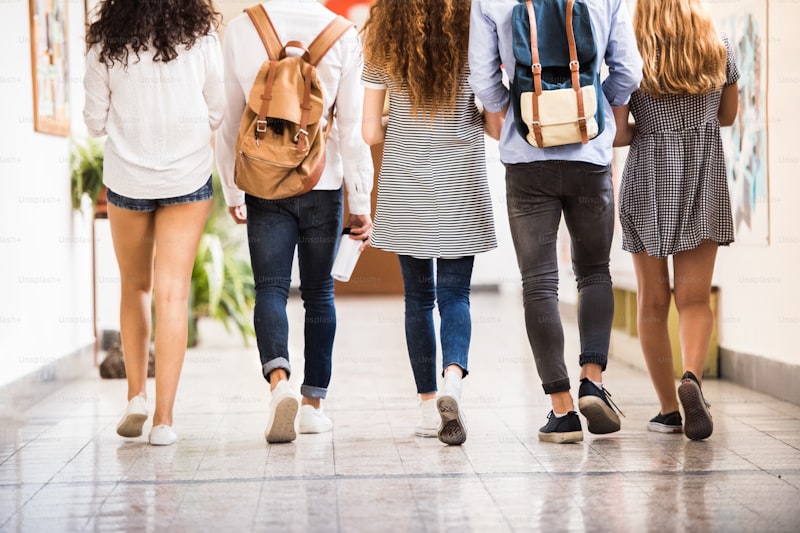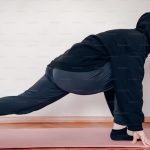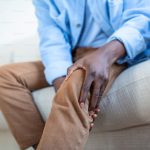Spring is here with it’s promise of glorious summer days. Soon legs will be tempted out from hibernation. Freedom from tights. No more trousers. Bring out the shorts and skirts I say!
This is a truly time of joy for most. And dread for many as the reality of what nature has bestowed on us in the leg department falls short of the media ideal. Very few of us have supermodel length legs that are sculpted to perfection. But fear not – yoga and our anatomy is all we need for super strong, summer legs. So, roll out your mat and set your intention. Lovely legs here we come!
Soft, Strong and Very, Very Long
Where shall I start? Asāna has SO much to offer the yogi who has their sights set on strong legs. But let’s think a little deeper before we look at the ‘how’ because lovely legs are not just about power. Strength without suppleness is a path to poor function and pain. Muscles need to be long and strong so that they can work efficiently through out their whole range of movement. This muscle length also allows joints to work in their most effective and comfortable positions. And, in turn, this brings better biomechanics and improved function.
Imagine the body builder who has not yet learned that stretching is a good thing – they walk awkwardly on bulky, tight legs. They lack the grace of biomechanical efficiency. Now think of a yogi that may not have legs that go on for miles. Their pins are almost certainly more ‘shapely’ than the average supermodel – in other words they are a ‘normal’ shape! But they glide on legs and move freely. They effortlessly ambulate through life looking wonderful in leggings and shorts. Their legs are not supermodel legs – they are better! They are yogi legs – shapely, strong, supple and Oh so beautiful!
The Path to Yogi Legs
Yoga is a journey and the path to yogi legs is paved with stepping stones. These are the building blocks that work give firm foundations for life and asāna. Working on core strength, leg strength and wider flexibility with a common thread of aspiring to biomechanical efficiency is the way forward. Here’s how:
Core Values
Without an efficient ‘core’ of abdominal and pelvic muscles, the legs will be unable to function well. Think of the core as the ‘root’ of the lower limbs. The foundation of leg strength and where leg power comes from. Focusing on core engagement in standing poses as well as practicing specific core strengthening poses is a crucial element of strong legs. Here are a few of my favourite ways to do this –
- Down dog to plank pulses – slowly inhaling to move forward from down dog into plank then exhaling back into down dog is a lovely dynamic core strengthener. Try holding the plank for a few breaths, ensuring maximum core activity by pushing heels backward at the same time as pushing hands forwards into the mat (as well as down). I often add a few of these moves into sun salutes and vinyāsa to build my core.
- Side planks – I love these for building strength in the core AND sides of hips where we need strength to hold the pelvis level any time we stand on one leg. (Like walking and running as well as in single leg yoga balances.) Start doing the bent knees and elbow variations, building up to the full expression of the pose gradually.
- Standing poses ? Think core, core and more core – there are SO many ways to do this! Try gently drawing lower ribs to the pelvis to prevent rib flare in backbends. Draw the tail bone to the floor between your feet in virabhadrāsanas 1 & 2 (warriors) and tadasāna (mountain pose). Virabhadrāsana 3 is a lovely core activator and a well-executed chaturanga dandāsana is core control personified.
Fascia, Flexibility & Function
As already mentioned, tight muscles prevent joints from working well. But it is not just the muscles that limit joint range of movement. Fascia is a common source of limited flexibility. Fascia is basically all of the connective tissues of the body – tendons, ligaments, nerve sheaths, as well as the named fascia (plantar and thoracic lumbar fascia). Muscles are surrounded by fascia and have fascia separating the individual muscle fibres and bundles of fibres. This means that you can’t really separate muscles from fascia so the whole lot is often referred to as myofascia.
Myofascia loves movement and hates being kept still. The more we move it, the more elastic myofascia becomes, allowing for more range of movement at the joints. More efficient joint movement brings LOTS of benefits. Joints are less likely to be problematic because they are able to work in their ‘comfort zone’. Improved biomechanical alignment reduces the effort needed to move – the body becomes energy efficient. Bottom line – happy legs!
Flexibility is a major component of yoga and it is a powerful tool to get the best from your legs. The main areas for focus on are:
- Lower back & glutes – balāsana (child pose) and malāsana (yogi squat)
- Front of hips – lunges in all their forms (low, high and twisted to name a few)
- Sides of hips – ardha matsyendrāsana (half lord of the fishes) and trikonāsana (triangle)
- Front of thighs – virāsana (hero pose) and ūrdhva dhanurāsana (upward bow)
- Back of thighs – all forward folds
- Shins – virāsana again
- Calves – ardo mukha svānāsana (downward facing dog). Especially ‘walk the dog’ where you pedal the heels up and down by bending alternate knees.
And Finally… Strength
With the foundations of a strong core and increasing flexibility now in place, we return to the notion of strength. All standing poses build lower limb strength. Ensuring activation of the legs in seated poses adds extra benefits too. Some poses lend themselves to strength while others need a little focus in specific areas to get the most from them. Here are a few to try:
- Utkatāsana (chair pose) – great butt and quads strengthening with core engagement. Try ardha utkatāsana (half-chair) by exhaling down into a deeper knee bend as you stretch the arms forwards and hold …
- Virabhadrāsana – versions 1 and 2 are lovely quadriceps strengtheners. Focus on pushing the front knee out to engage glutes too.
- Single leg balances – all of these are wonderful at strengthening the hip on the standing leg. Add an extra challenge by moving from one balance to another rather than simply holding the static pose. My favourite is from virabhadrāsana 3 to a small single leg squat with the raised leg in pigeon leg position. Oh, and back…maybe a few times…
- Forward folds – it is easy to just hang in forward folds and feel the stretch BUT activating those hamstrings to push the tail bones up to the ceiling builds strength in those lengthening tissues. Hard work but SO worth it!
- Yoga style split squats – start in a high lunge with the back heel lifted, both knees pointing forwards. With hands on hips – inhale to dip back knee towards the floor then inhale to straighten both legs. Go as deep as you can with perfect control. To add challenge raise arms overhead as you inhale into the squat and lower to sides as you straighten legs. This is a lovely combination of leg strengthener and stretch to the front of the back leg. Bonus!
All legs have the potential to be yogi legs. Long or short. Lean or curvy. Old or young. Whether adding a few twists to a home practice or trying a new yoga style – all yogi’s can aspire to lovely legs.
Well, the sun is shining here now and I’m tempted by my shorts… But first, I have work to do. I’ll certainly be a ‘work in progress’ as the mercury rises with yogi legs as my goal. Care to join me on my journey?













